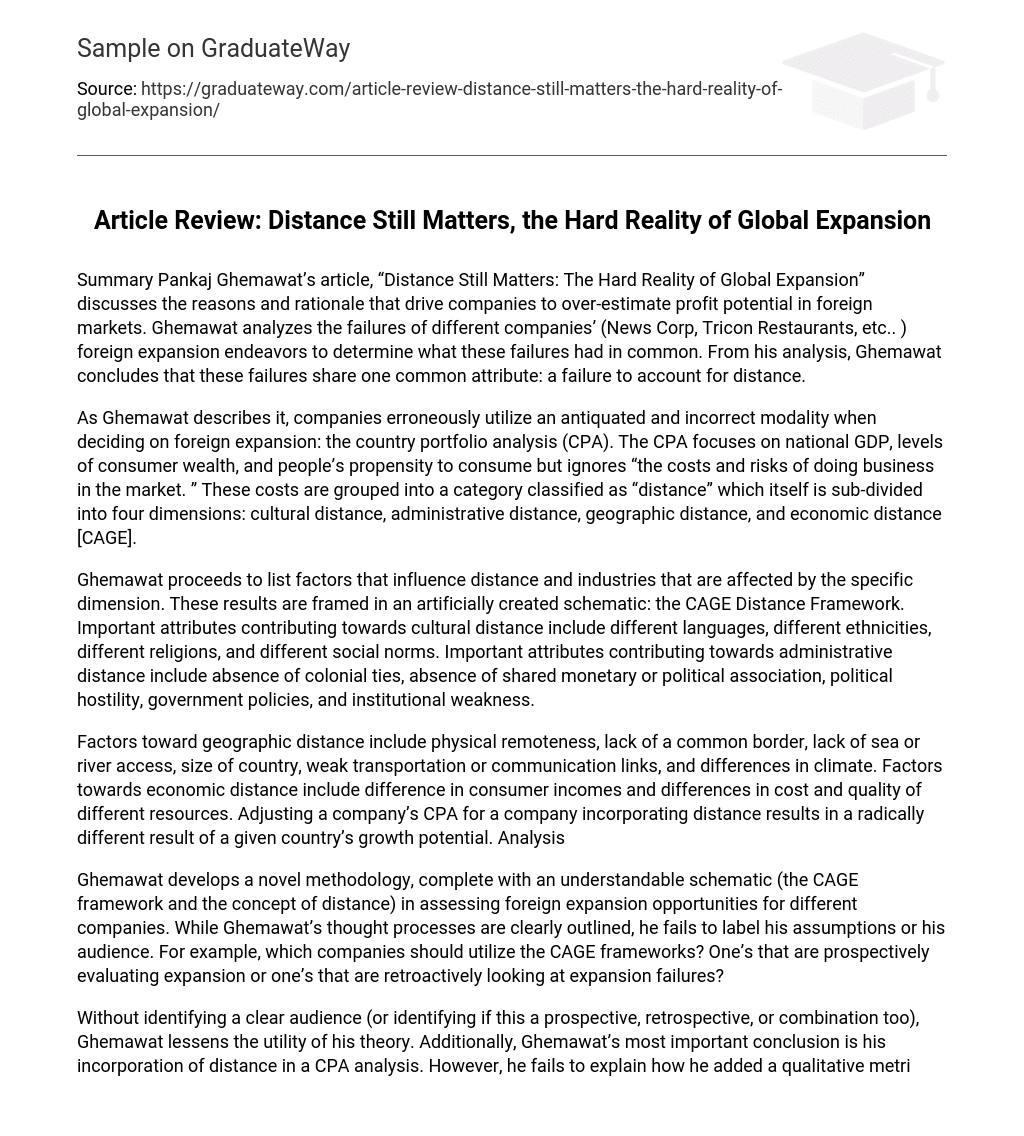Summary
In his article titled “Distance Still Matters: The Hard Reality of Global Expansion,” Pankaj Ghemawat delves into the reasons behind companies’ tendency to overestimate the profitability of foreign markets. Ghemawat examines the unsuccessful efforts of various companies, such as News Corp and Tricon Restaurants, in expanding abroad, aiming to identify common factors contributing to their failures. Ultimately, Ghemawat concludes that all these failures can be attributed to a failure in considering the factor of distance.
According to Ghemawat, companies make a mistake by using an outdated and incorrect approach when deciding to expand globally: the country portfolio analysis (CPA). The CPA looks at factors such as national GDP, consumer wealth, and consumption behavior, but it fails to consider the costs and risks associated with doing business in a specific market. These costs fall under the category of “distance,” which can be further divided into cultural distance, administrative distance, geographic distance, and economic distance [CAGE].
Ghemawat further lists various factors that impact distance, as well as industries that are impacted by these specific factors. These findings are presented through the CAGE Distance Framework, which serves as an artificial schematic. Cultural distance is influenced by several crucial attributes, such as diverse languages, ethnicities, religions, and social norms. Administrative distance, on the other hand, is shaped by attributes such as lack of colonial ties, absence of shared monetary or political association, political hostility, government policies, and institutional weakness.
Factors that contribute to geographic distance include physical remoteness, absence of a shared border, lack of access to seas or rivers, size of the country, inadequate transportation or communication links, and variations in climate. Factors that contribute to economic distance include discrepancies in consumer incomes and disparities in the costs and quality of various resources. When a company takes into account the impact of distance on its cost per acquisition (CPA), the assessment of a country’s growth potential can significantly change.
Analysis
Ghemawat introduces a new approach, which includes a clear diagram (the CAGE framework and the concept of distance), to evaluate potential overseas expansion options for various companies. Although Ghemawat presents his ideas comprehensively, he omits stating his assumptions or target audience. This raises questions about which companies should employ the CAGE framework: those considering future expansion or those analyzing past expansion failures?
Ghemawat’s theory lacks a clear identification of audience (whether prospective, retrospective, or both), thus diminishing its utility. Moreover, his pivotal point of incorporating distance as a metric in a CPA analysis is not sufficiently explained. By failing to elaborate on how he integrated a qualitative measure (distance) into a quantitative model (CPA), the credibility and effectiveness of his theory become questionable.





